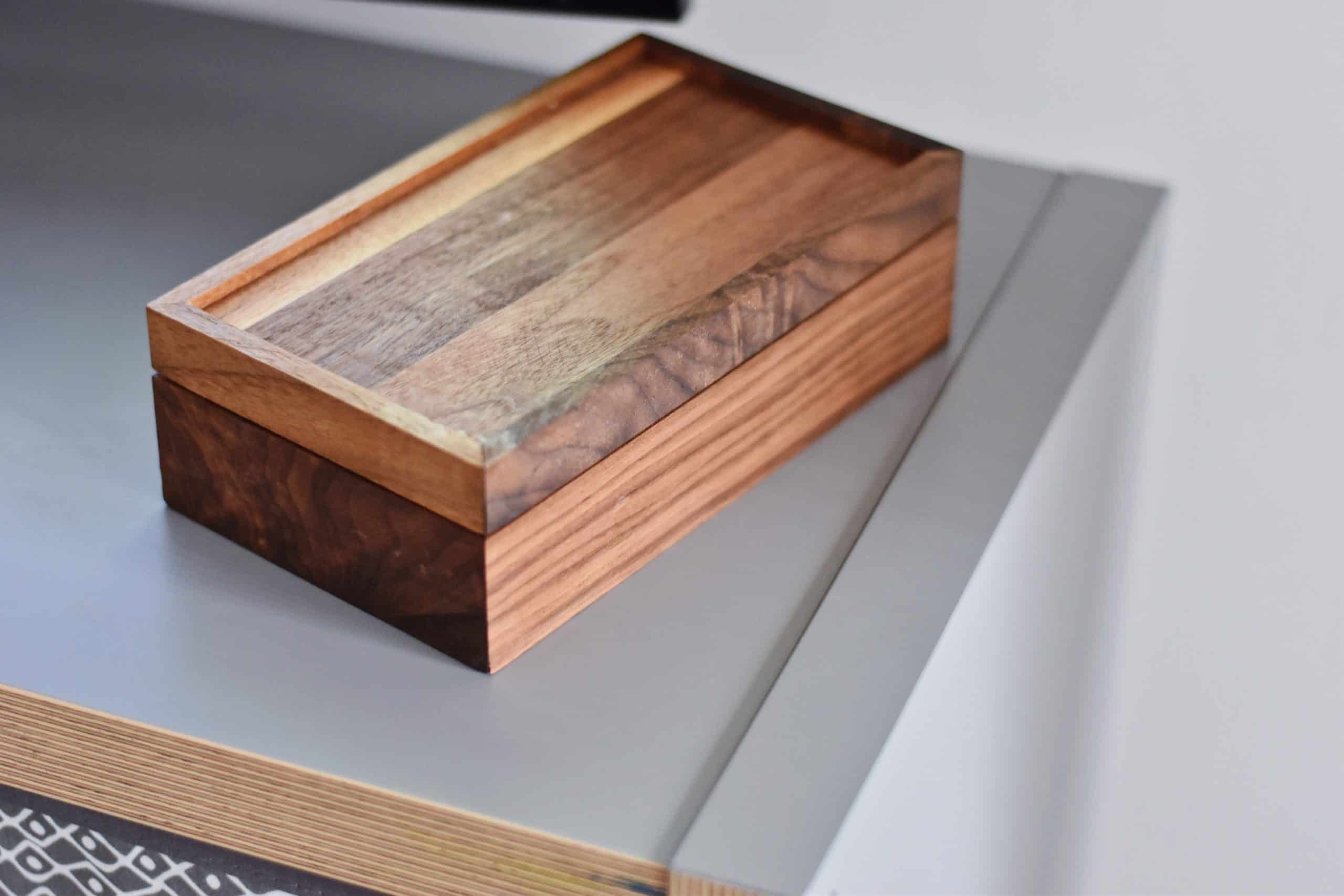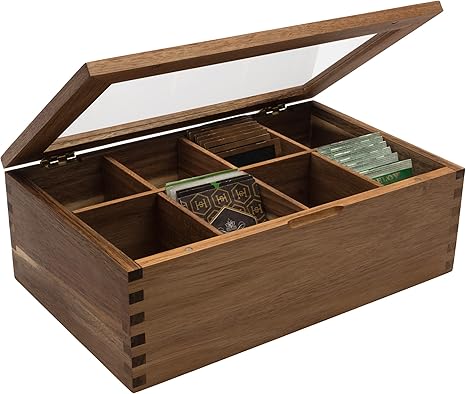When you think of the tea chest you hold in your hands today. Sharing tea with your friends or enjoying a cup yourself. It’s incredible to imagine that the tea chest has a history back to the Boston Tea Party and beyond. That a tea chest once carried precious tea all over the world. The history of the tea chest and it’s journey continues.

The first tea boxes on a tea journey
Tea traveled millions of miles by ship. During the early 17th century of transatlantic transportation. The availability of materials to use to ship items in were few. Tea was a valued commodity and had to be protected from the rough passage waters of travel by ship. In 1657 we found the first sale of tea from China to England. Tea was not just a wonderful drink. Tea’s considered to be a healthy, therapeutic as well as and elegant drink.
When the ship would hit rough waters the cargo (including the shipmates) tossed back and forth. What would they use to protect the precious tea?
The answer was tea chests. Tea chests are sometimes referred to as tea caddies. Today tea chests are stuffed with tea and sent to their destination. Millions of tea chests were transported this way. They were transported to England, as well as other destinations.
PERFECT SIZE TEA BOX - 9.6 x 9.6 x 3.3”/24.5 x 24.5 x 8.5cm. Accommodates 120+ tea bags with enough room to fill the tea box without having the lid touch the top of the tea bags when the lid is closed.
How do you protect the tea from the rough ocean voyage?
Something so common. Made of wood (light plywood like wood), lined in what was once lead then changed to aluminum. Held together by metal fasteners. The tea chests were locked to protect the cargo from being used during the passage. At first, there was no standard weight for the wooden tea chest and tea. Eventually, the tea chests and teas weighed off at 100 pounds. The teas even had a specific area of the ship they were stored.
So what do you do with the empty tea chest? If you google tea chest upcycle you will see a couple of modern-day ideas of how to use the chests as furniture. It’s funny to see these wooden chests along with modern settings.
The tea chests were seldom reused for shipping teas again. People became creative with re-using them. Some tea chests were given back to the ships and the sailors used them as a “sailor’s chest”. The tea chests were used for non-food-related ways such as storage. Later on, the tea chests were parted out and used for basses and used in sideshows and performances.
Today only 2 of the 340 tea chests survive. One chest sits protected and displayed at the Boston Tea Party Ships and Museum. We will talk about the Boston Tea Party later.
Store your teabags standing up without interfering with closing the lid - Our teabag organizer box includes 8 tall compartments allowing the lid to close even if the teabags are standing up.
Once onshore how do you store the tea?
When the tea arrived at its location. Those locations at first were restaurants, stores, and apothecaries. Tea was an expensive commodity and remained expensive for years. The tea was prepared and served to those considered the intellectuals of the world. Later tea was purchased and used inside the homes. The tea was often removed from their wooden tea chest and parted to share and sell.
Like any product that is expensive a way is found to buy that product cheaper. Smuggling tea was the way and even the influential were known to use those paths to supply their tea demand. Tea may not seem expensive to us, today. Using historical papers we see that tea went for around 16 shillings a pound. That is approximately .15 cents. This made tea more accessible as an attempt to stop the smuggling.
The tea market continued to grow. More and more homes are delighted with the tasty and healthy beverage.
During the exportation of tea, another well-known but not as popular product was being shipped at the same time. That product was: Opium. The East India Tea Company was aware and part of the whole operation. Banks and investors made much money on the export of both tea and opium.
So, how much tea was transported? Documentation found in less than 30 years (1701-1730) tea went from 70 pounds to over a million pounds. As interest increased so did the cost. Here we come right back to where we started. The home tea chest or caddy.
People who were able to purchase tea wanted to make sure to keep it as fresh as they could. Personal tea chests were used to preserve the life of their tea.
Personal tea chests were approximately 20 x 20 x 30 inches.
The Boston Tea Party
When we talk about tea transport, we should mention the iconic tea chest dump in the Boston Harbour, better known as the Boston Tea Party.
https://www.bostonteapartyship.com/tea-chests
The Tea Act was not a tax rise but tax forgiveness. But not for everyone. The Tea Act was to be tax-free from China to America. The Townshend Act was a tax increase on glass, lead, paints, paper, and tea. The Townshend Act resulted in the Boston Massacre.
So what happens is a party of epic size and destruction. When they passed the Tea Act of 1773 this allowed companies and people to undermine and cut out competitors. Many leaders canceled orders. Boston’s leaders allowed the tea to arrive.
Americans rebelled against this double standard of some being taxed, while others had to pay. They snuck onto the ships, some dressed as Indians, and threw an entire shipment of tea into the Boston Harbor.
The tally was:
- 340 chests of tea
- 90,000 pounds of tea
- 1,700,000 dollars of tea at current standards
That is a lot of tea and a lot of money. There is a lot more to the history of the Boston tea party and I hope you take a moment to learn more about it.
Has 6 equally divided compartments to hold your tea. This tea bag storage case is ideal for any home, company or restaurant use.
Today’s tea chest or tea caddy
The personal caddy or tea chest is used to protect the loose leaf tea. These tea chests were brought from China and made of porcelain. They resembled a ginger jar or urn. The jars had lids that fit on the top like a stopper. Until the 1800’s they were called tea canisters. As time moved forward the tea canisters were made with other materials like metal, wood, or even shells.
Most of the tea caddies we discussed were able to lock and secure. The tea inside was valuable so worth protecting.

Wooden tea chests
The early Georgian Mahogany caddies are closer to what we know today as a tea chest. They’re made of expensive mahogany, rectangular with tiny feet and a lid that locks. The Georgian ladies had some time on their hands. They began to decorate the boxes with papers rolled and secured with glue.
Following the paper rolling and gluing came designs made of tortoiseshell, ivory, and mother of pearl. Knobs, molding, and more decor were added.
Modern-day tea chests
The tea chests we are familiar with today are generally made of a strong world. Some are engraved and decorated. These tea chests have dividers on the inside to separate the teas and tea packets. Some are lined with paper or material and able to secure with a lock. Yet, many do not have locks these days since tea is a more common commodity than in the 1800s.
We are a lucky group of tea drinkers!
How do we pick a tea chest in the 21st century?
Price – Price matters in all things. Today you can find a tea chest below fifty dollars. Others can be as high as a couple thousand, or more if you are looking at vintage tea caddies.
Material – I like the wooden tea chests. But there are a few varieties out there. You need to decide what material you want and what will work for your purpose.
Need – What are your tea storage needs? Today most tea chests are used to hold tea bagged tea. What is your desire for your tea chest?
Desire – Are you collecting or looking for a useful tea chest or both?
Decor – Big decisions here. Your tea chest should not stand out in the middle of a room. It should accent your decor or tea area like any other display piece in your home.
Functionality – Tea chests come in all sizes and shapes. What will work best for you? As I stated most tea chests today are for the storage and display of bagged tea. How much bagged tea do you use? Do you want your tea bags to lay flat or stand up?
Design – Inside the tea box is as important as the outside. Sometimes more important. Do you want your tea box lined, so with what? How many dividers? Should you tea stand or lay flat?
I have three tea chests currently. Two I display and one I currently use. The one I use I kept in a cabinet and rarely seen.
Conclusion
The tea chest you choose is one that not only fits your teas but fits your personality. That could mean a few things including the size of the box, see-thru lid, how the tea sits in the box, is it lined, and more.
You want to be content with your tea box and know the history behind its creation to share with family and friends.
We want to never forget the history of the wooden tea chest. How it survived a voyage through rough ocean waters. To somehow end up in our own personal tea chest sitting on our table or counter.





